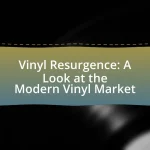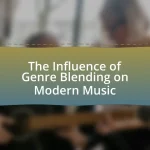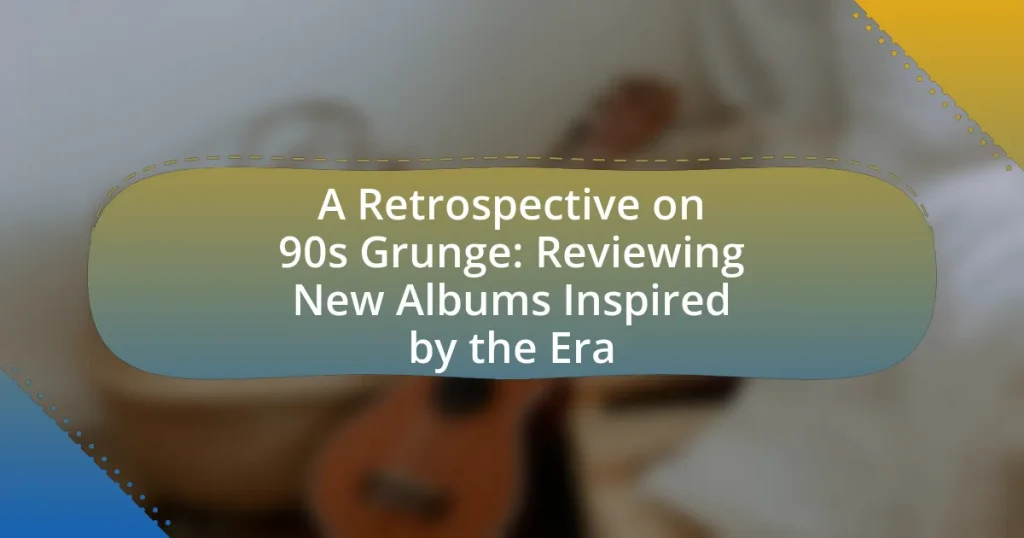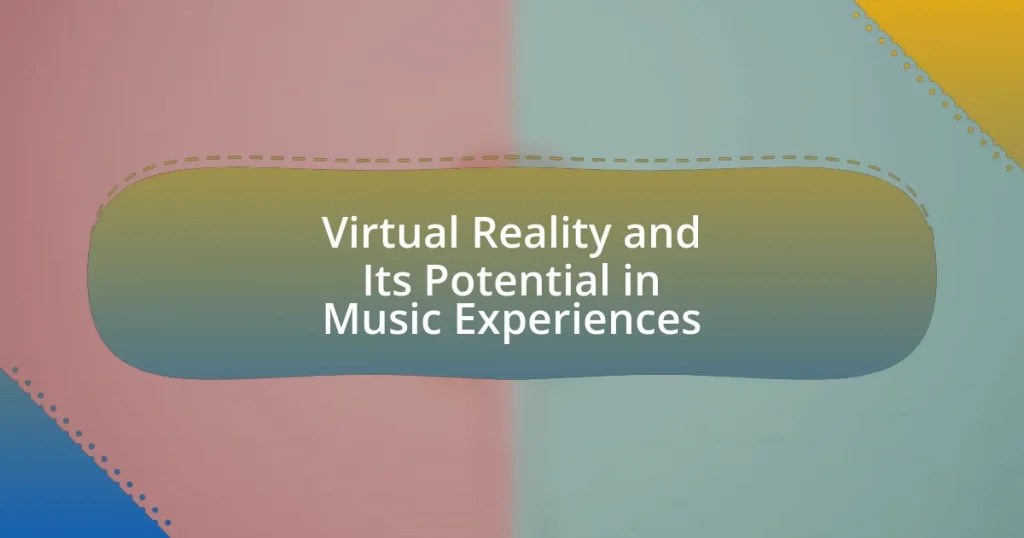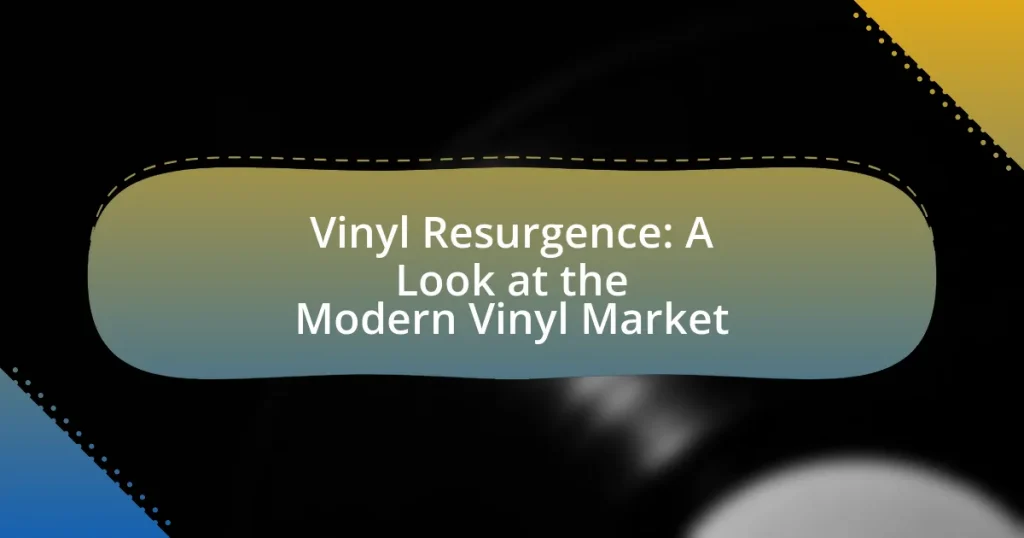The article focuses on the essence of 90s Grunge music and its lasting impact, particularly in relation to new albums inspired by the genre. It explores the raw sound, emotional authenticity, and themes of disillusionment that defined Grunge, highlighting influential bands such as Nirvana, Pearl Jam, and Soundgarden. The piece examines the cultural and social factors that contributed to the emergence of Grunge, the pivotal role of the Seattle music scene, and how fashion and lifestyle shaped its identity. Additionally, it discusses the key characteristics of Grunge sound, its influence on contemporary music, and the themes prevalent in new releases that echo the original movement. The article concludes by recommending listening practices for appreciating modern albums that pay homage to 90s Grunge.

What defines the essence of 90s Grunge music?
The essence of 90s Grunge music is defined by its raw sound, emotional authenticity, and themes of disillusionment. Characterized by heavy guitar riffs, a blend of punk and metal influences, and often melancholic lyrics, Grunge emerged as a response to the polished aesthetics of mainstream rock. Bands like Nirvana, Pearl Jam, and Soundgarden exemplified this movement, with Nirvana’s “Nevermind” album, released in 1991, becoming a cultural touchstone that captured the angst of a generation. The genre’s connection to the Seattle music scene and its anti-establishment ethos further solidified its identity, making Grunge a significant cultural phenomenon of the 1990s.
How did cultural and social factors influence the emergence of Grunge?
Cultural and social factors significantly influenced the emergence of Grunge by reflecting the disillusionment and angst of the youth in the late 1980s and early 1990s. The economic recession, particularly in the Pacific Northwest, led to a sense of hopelessness among young people, which was expressed through the raw and unpolished sound of Grunge music. Additionally, the rise of alternative culture, characterized by a rejection of mainstream values and consumerism, fostered a community that embraced authenticity and emotional vulnerability. This was evident in the lyrics of Grunge bands like Nirvana and Soundgarden, which often addressed themes of alienation and societal pressures. The Seattle music scene, supported by independent record labels, provided a platform for these artists, further solidifying Grunge as a cultural movement that resonated with a generation seeking to voice their frustrations and identity.
What role did the Seattle music scene play in shaping Grunge?
The Seattle music scene was pivotal in shaping Grunge by providing a unique cultural and musical environment that fostered the genre’s development. This scene emerged in the late 1980s and early 1990s, characterized by a blend of punk rock, heavy metal, and alternative rock influences, which defined the sound of Grunge. Key bands such as Nirvana, Pearl Jam, and Soundgarden originated from Seattle, drawing inspiration from the city’s underground music culture and DIY ethos. The establishment of influential venues like The Crocodile and the release of compilation albums such as “Sub Pop 200” helped to promote local talent and solidify Seattle as the epicenter of Grunge music. The city’s distinct sound and aesthetic, marked by themes of disillusionment and authenticity, resonated with a generation, ultimately leading to Grunge’s mainstream success in the early 1990s.
How did fashion and lifestyle contribute to the Grunge identity?
Fashion and lifestyle significantly shaped the Grunge identity by promoting a rejection of mainstream aesthetics and embracing a more authentic, raw expression. The typical Grunge fashion included thrift store clothing, flannel shirts, ripped jeans, and combat boots, which symbolized a countercultural stance against the polished looks of the 1980s. This style was not just about clothing; it reflected a lifestyle that valued individuality and anti-consumerism, as seen in the lyrics of Grunge bands like Nirvana and Pearl Jam, which often critiqued societal norms and materialism. The lifestyle associated with Grunge also emphasized a sense of community and shared experiences, particularly in cities like Seattle, where the movement originated, fostering a collective identity among fans and musicians alike.
What are the key characteristics of 90s Grunge sound?
The key characteristics of 90s Grunge sound include heavy guitar distortion, raw and emotive vocals, and a blend of punk rock and heavy metal influences. This genre often features a lo-fi production aesthetic, which emphasizes authenticity and a sense of disillusionment. Bands like Nirvana and Soundgarden exemplified these traits, with Nirvana’s “Nevermind” showcasing dynamic shifts between quiet verses and explosive choruses, a hallmark of the sound. The lyrical themes frequently addressed angst, alienation, and social issues, resonating with the youth of that era.
Which instruments and production techniques were commonly used in Grunge music?
Grunge music commonly utilized electric guitars, bass guitars, and drums as its primary instruments. The genre is characterized by the use of heavily distorted guitar sounds, often achieved through the use of fuzz and overdrive pedals, which contributed to its raw and gritty aesthetic. Additionally, production techniques such as layering of guitar tracks, use of dynamic contrasts, and a preference for live recording sessions were prevalent, creating an authentic sound that defined the genre. Notably, albums like Nirvana’s “Nevermind” and Soundgarden’s “Badmotorfinger” exemplified these techniques, showcasing the impact of production choices on the overall grunge sound.
How did lyrical themes reflect the emotions of the era?
Lyrical themes in 90s grunge music reflected the emotions of the era by expressing feelings of disillusionment, angst, and social alienation. Artists like Kurt Cobain and Chris Cornell articulated the struggles of a generation grappling with economic uncertainty, mental health issues, and a sense of purposelessness, which resonated deeply with listeners. For instance, Nirvana’s “Smells Like Teen Spirit” captured the apathy and rebellion of youth, while Soundgarden’s “Black Hole Sun” explored themes of despair and existential dread. These themes were not only a reflection of personal experiences but also mirrored broader societal issues, such as the impact of the recession and the rise of consumerism, making the music a powerful outlet for collective emotions during that time.
What impact did 90s Grunge have on the music industry?
90s Grunge significantly transformed the music industry by popularizing alternative rock and reshaping mainstream music. This genre, characterized by its raw sound and introspective lyrics, led to a shift away from the polished production of 80s pop and hair metal, making way for a more authentic and relatable musical expression. The success of bands like Nirvana, Pearl Jam, and Soundgarden propelled grunge into the spotlight, with Nirvana’s “Nevermind” selling over 30 million copies worldwide and marking a cultural shift in music consumption. Additionally, the rise of grunge influenced record labels to seek out and promote alternative acts, leading to a diversification of the music scene and the emergence of subgenres. This era also fostered a new wave of youth culture that embraced individuality and anti-commercialism, leaving a lasting legacy on artists and genres that followed.
How did Grunge influence other music genres that followed?
Grunge significantly influenced subsequent music genres by integrating its raw sound and emotional authenticity into alternative rock, post-grunge, and even pop music. The genre’s emphasis on distorted guitars, introspective lyrics, and a DIY ethos reshaped the musical landscape, leading to the emergence of bands like Foo Fighters and Bush, who adopted grunge’s sonic characteristics while achieving mainstream success. Additionally, the emotional depth and themes of alienation found in grunge resonated with artists in genres such as emo and indie rock, fostering a wave of music that prioritized personal expression and authenticity. This influence is evident in the 1997 album “The Colour and the Shape” by Foo Fighters, which showcased grunge’s impact on alternative rock, blending catchy melodies with the heavy guitar riffs typical of the genre.
What legacy did Grunge leave on contemporary music artists?
Grunge left a significant legacy on contemporary music artists by influencing their sound, aesthetic, and lyrical themes. The genre’s raw emotional expression and rejection of polished production have inspired a wave of artists across various genres, including alternative rock, indie, and even pop. For instance, bands like Foo Fighters and artists such as Billie Eilish have incorporated grunge’s introspective lyrics and gritty sound into their music, reflecting the genre’s impact on modern songwriting and production styles. Additionally, the fashion associated with grunge, characterized by flannel shirts and a casual, unkempt look, continues to resonate in contemporary fashion trends among musicians and fans alike. This enduring influence underscores grunge’s role in shaping the identity of modern music and its artists.

What new albums have been inspired by 90s Grunge?
Recent albums inspired by 90s grunge include “The New Abnormal” by The Strokes, which incorporates elements of the genre’s raw sound and introspective lyrics. Additionally, “Superbloom” by A R I Z O N A reflects grunge’s influence through its emotional depth and guitar-driven melodies. These albums showcase a revival of the grunge aesthetic, blending modern production with the iconic characteristics of the 90s era.
Which contemporary artists are drawing inspiration from the Grunge era?
Contemporary artists drawing inspiration from the Grunge era include Billie Eilish, who incorporates dark, moody aesthetics reminiscent of the 90s, and the band Wolf Alice, known for their sound that blends grunge with modern rock elements. Additionally, artists like Phoebe Bridgers and the band Nothing But Thieves have also cited grunge influences in their music and style. These artists reflect the raw emotionality and authenticity that characterized the original grunge movement, connecting their work to the legacy of bands like Nirvana and Soundgarden.
What elements of 90s Grunge can be found in their music?
Elements of 90s Grunge found in their music include heavy guitar distortion, introspective and often dark lyrics, and a raw, unpolished production style. Bands like Nirvana and Soundgarden exemplified these characteristics, using power chords and feedback to create a gritty sound that defined the genre. The lyrical themes often addressed issues such as alienation, depression, and societal disillusionment, reflecting the angst of the era. Additionally, the influence of punk rock and alternative rock is evident in the song structures and vocal delivery, which often feature a mix of melodic and aggressive elements.
How are these artists interpreting Grunge for a modern audience?
Artists are interpreting Grunge for a modern audience by blending traditional Grunge elements with contemporary musical styles and themes. This includes incorporating electronic sounds, hip-hop influences, and polished production techniques while maintaining the raw emotional intensity characteristic of Grunge. For example, artists like Billie Eilish and the band Wolf Alice have successfully integrated Grunge’s angst and authenticity into their music, appealing to today’s listeners. This evolution reflects a broader trend where nostalgia for the 90s is fused with current cultural narratives, allowing new generations to connect with the Grunge ethos while experiencing it through a modern lens.
What themes are prevalent in new albums inspired by Grunge?
New albums inspired by Grunge predominantly explore themes of alienation, introspection, and emotional turmoil. These themes reflect the original Grunge movement’s focus on the struggles of youth, societal disillusionment, and personal identity crises. For instance, artists often incorporate raw, confessional lyrics that delve into mental health issues, substance abuse, and existential angst, mirroring the lyrical content of iconic Grunge bands like Nirvana and Soundgarden. The resurgence of these themes in contemporary music highlights a continued relevance of Grunge’s emotional depth and authenticity in today’s cultural landscape.
How do these themes compare to those found in original Grunge music?
The themes in contemporary music inspired by original Grunge music often reflect similar feelings of disillusionment, alienation, and introspection. Original Grunge music, characterized by its raw emotional expression and critique of societal norms, frequently addressed issues such as depression, substance abuse, and existential angst, as seen in the works of bands like Nirvana and Soundgarden. Contemporary interpretations maintain this focus but may also incorporate modern elements like digital alienation and social media disconnection, expanding the thematic scope while retaining the core essence of Grunge’s emotional depth. This evolution illustrates how the foundational themes of Grunge continue to resonate and adapt to current societal contexts.
What messages are contemporary artists conveying through their music?
Contemporary artists are conveying messages of social justice, mental health awareness, and personal identity through their music. These themes reflect the struggles and experiences of modern society, often drawing parallels to the emotional depth found in 90s grunge. For instance, artists like Billie Eilish and Hozier address issues such as depression and societal pressures, resonating with listeners who face similar challenges. Additionally, the rise of genres like hip-hop and indie rock showcases a blend of personal storytelling and political commentary, emphasizing the importance of authenticity and vulnerability in today’s music landscape.

How can listeners appreciate new albums inspired by 90s Grunge?
Listeners can appreciate new albums inspired by 90s Grunge by actively comparing the musical elements, themes, and cultural context of these albums to the original grunge sound. Engaging with the raw emotional expression, distorted guitar riffs, and introspective lyrics characteristic of 90s Grunge allows listeners to recognize the influence of bands like Nirvana and Pearl Jam on contemporary artists. Additionally, understanding the socio-political backdrop of the 90s, including the disillusionment and angst that fueled the genre, enhances appreciation for how modern musicians reinterpret these themes. This connection to the past can be further deepened by exploring interviews and documentaries that discuss the legacy of grunge, providing insights into how current artists draw inspiration from this influential era.
What should fans look for when exploring these new releases?
Fans should look for authenticity and musical elements that reflect the essence of 90s grunge when exploring these new releases. Authenticity is crucial as it indicates whether the artists genuinely capture the spirit of the era, often characterized by raw emotion and a DIY ethos. Additionally, fans should pay attention to the use of guitar riffs, lyrical themes of angst and disillusionment, and production styles reminiscent of iconic grunge bands like Nirvana and Pearl Jam. These elements serve as indicators of a successful homage to the genre, ensuring that the new releases resonate with the original sound and cultural impact of 90s grunge.
How can listeners identify the influence of 90s Grunge in modern tracks?
Listeners can identify the influence of 90s Grunge in modern tracks through specific musical elements such as distorted guitar riffs, raw vocal styles, and introspective lyrics. These characteristics are reminiscent of iconic Grunge bands like Nirvana and Soundgarden, which often employed heavy guitar distortion and a mix of melodic and aggressive vocal delivery. Additionally, modern artists may incorporate themes of alienation and emotional struggle in their lyrics, echoing the lyrical content prevalent in 90s Grunge music. For instance, the resurgence of lo-fi production techniques and the use of alternative tunings in contemporary songs further highlight this influence, as seen in tracks by bands like Foo Fighters and artists like Billie Eilish, who draw from the Grunge aesthetic while blending it with current musical trends.
What are some recommended listening practices for a deeper understanding?
To achieve a deeper understanding of 90s grunge music, actively engage in focused listening practices. First, listen to entire albums rather than individual tracks to appreciate the thematic and sonic coherence that artists intended. This approach allows listeners to grasp the emotional narratives and stylistic evolution present in the music. Additionally, pay attention to the lyrics, as they often reflect the cultural and social issues of the time, providing context that enhances comprehension.
Moreover, explore live recordings and interviews with artists to gain insights into their creative processes and influences. This can deepen appreciation for the genre’s authenticity and its impact on contemporary music. Engaging with critical analyses and reviews of the albums can also provide valuable perspectives that enrich the listening experience. These practices collectively foster a more nuanced understanding of the 90s grunge movement and its lasting legacy.
What are the best new albums that pay homage to 90s Grunge?
The best new albums that pay homage to 90s Grunge include “The New Abnormal” by The Strokes, “Superbloom” by A R I Z O N A, and “The Future” by The Black Angels. “The New Abnormal,” released in 2020, features a sound reminiscent of the raw energy and emotional depth characteristic of 90s Grunge, drawing comparisons to bands like Nirvana and Pearl Jam. “Superbloom,” released in 2021, incorporates grunge-inspired guitar riffs and introspective lyrics, echoing the themes prevalent in the 90s scene. “The Future,” released in 2022, channels the dark, atmospheric elements of grunge, aligning with the genre’s legacy. These albums reflect the influence of 90s Grunge through their musical style and lyrical content.
Which albums have received critical acclaim for their Grunge influences?
Albums that have received critical acclaim for their Grunge influences include “Dirt” by Alice in Chains, “Ten” by Pearl Jam, and “Nevermind” by Nirvana. “Dirt,” released in 1992, is often praised for its dark themes and heavy sound, solidifying Alice in Chains’ place in the grunge movement. Pearl Jam’s “Ten,” released in 1991, is recognized for its emotional depth and powerful vocals, contributing significantly to the genre’s popularity. Nirvana’s “Nevermind,” released in 1991, is credited with bringing grunge to mainstream audiences and is frequently cited as one of the greatest albums of all time, showcasing the raw energy and angst characteristic of the genre.
How do these albums reflect the spirit of the original Grunge movement?
These albums reflect the spirit of the original Grunge movement through their raw emotional expression, heavy guitar riffs, and themes of disillusionment and social critique. The sound often mirrors the gritty, unpolished aesthetic that characterized 90s Grunge, as seen in the use of distorted guitars and introspective lyrics that address personal and societal struggles. For instance, the lyrical content frequently explores feelings of alienation and existential angst, reminiscent of iconic Grunge bands like Nirvana and Soundgarden, which tackled similar themes in their music. Additionally, the production style often favors a lo-fi approach, aligning with the DIY ethos that was central to the Grunge movement, further solidifying the connection between these new albums and the original era.

